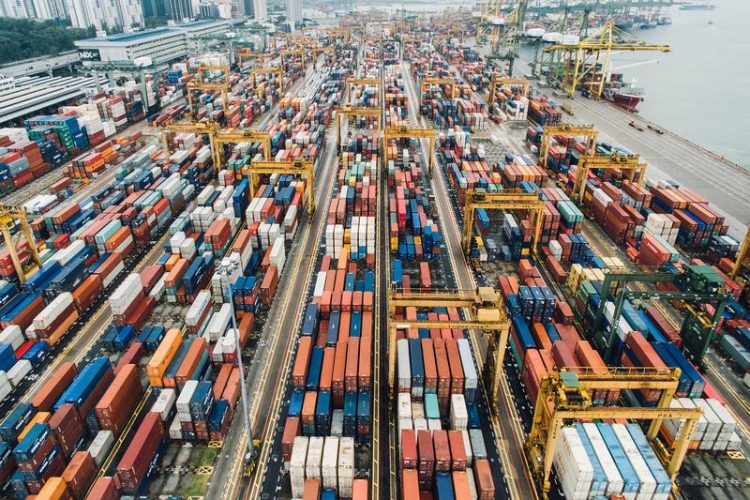New "Silk Road" brings challenges and opportunities for biodiversity conservation

The “Belt and Road” initiative (BRI) will not only influence the future of global trade but also the environment and the biological resources. Photo: StockSnap / Pixabay.com / CC0 Public Domain
China is establishing an infrastructure and service network to connect the country, by land and sea, to different parts of Asia, Africa and Europe. According to Chinese government, this new “Silk Road” should count on the participation of least 65 countries, involve about two-thirds of the world’s population and boost one-third of the global economy.
This “Belt and Road” initiative (BRI) promises to greatly influence the future of global trade and promote the economic development around the world. However, it may also promote permanent environmental degradation. The implementation of BRI implies massive rail and road infrastructure expansion, new ports construction in the Pacific and Indian Oceans, and the creation of oil and gas pipelines to Russia, Kazakhstan and Myanmar.
Economic development and environmental sustainability: opposites?
The article points that BRI’s economic development corridors coincide with high environmental value areas and can therefore have significant impacts on biodiversity.
“Legitimate aspirations for the people’s economic development may clash with environmental sustainability goals, due to the large amounts of raw material needed to support transport infrastructure’s mega-expansion in environmentally sensitive areas, such as South-East Asia and Tropical Africa”, explains Fernando Ascensão, the article’s first author from the Research Center in Biodiversity and Genetic Resouces (CIBIO-InBIO)
A recent report by the World Wildlife Fund (WWF) shows that these corridors overlap with 1739 Key Biodiversity Areas (KBAs) and with the range of 265 threatened species, including 39 critically endangered.
Abrupt changes in ecosystem quality and functionality due to pollution, the spread of invasive species, restrictions of animal movement, habitat loss and increased wildlife mortality, are at stake. In addition, “raw materials and fossil fuels use, and increased oil and gas reserves exploitation constitute a scenario of an increasing dependency on fossil-fuel and high greenhouse gas emissions”, stresses Henrique Pereira (CIBIO-InBIO, iDiv and MLU).
How to promote an “ecological civilization”?
Since the 1990s, China has been strengthening its environmental legislation in pursuit of an “ecological civilization”. In this context, Strategic Environmental Assessments (SEAs) have been applied as legal requirement for all major economic development activities. The article now published in Nature Sustainability argues that the balance between economic development and environmental sustainability can be achieved if China replicates the good environmental practices, already required within its borders, in the Belt and Road Initiative.
According to Fernando Ascensão “all BRI-related projects should undergo Strategic Environmental and Social Assessments which provide, at an early stage of decision-making, holistic information on the costs and benefits of development plans, including those reflecting the impacts on biodiversity and human populations“.
The authors acknowledge that the large number of countries and entities involved in BRI may be an obstacle to a rapid paradigm shift. Therefore, they suggest concrete measures to be implemented, such as linking project financing to compliance with the environmental sustainability guidelines, associated to the monitoring of environmental effects.
They also argue that the standards to be implemented should be “sufficiently flexible to accommodate regional idiosyncrasies”, with “dialogue between all those involved in the decision-making process (governments, financial institutions, non-governmental organizations and local communities) and researchers in biodiversity conservation, human health and climate change mitigation”.
The Belt and Road Initiative could be “an opportunity for China to take a leading role in moving global development towards sustainability by requiring its overseas partners at least the same environmental quality China aspires for within its territory”, concludes Henrique Pereira.
Original publication:
Fernando Ascensão, Lenore Fahrig, Anthony P. Clevenger, Richard T. Corlett, Jochen A. G. Jaeger, William F. Laurance and Henrique M. Pereira (2018): Environmental challenges for the Belt and Road Initiative. Nature Sustainability (2018). doi:10.1038/s41893-018-0059-3
https://doi.org/10.1038/s41893-018-0059-3
Contacts:
Henrique Miguel Pereira
Head of Research Group Biodiversity Conservation at the German Centre for Integrative Biodiversity Research (iDiv) Halle-Jena-Leipzig and the Martin Luther University Halle-Wittenberg, Germany
and Chair of the Portugal Infrastructures Biodiversity Chair at the Research Centre in Biodiversity and Genetic Resources (CIBIO-InBIO), Portugal
e-mail: henrique.pereira@idiv.de
https://www.idiv.de/en/groups_and_people/employees/details/eshow/pereira_henriqu…
https://cibio.up.pt/people/details/hmpereira
and
Fernando Ascensão
Post-Doc Researcher at the Research Centre in Biodiversity and Genetic Resources (CIBIO-InBIO), Portugal
e-mail: fernandoascensao@gmail.com
https://cibio.up.pt/people/details/ascensaof
as well as
Tilo Arnhold
iDiv Media and Communications
Phone: +49 341 9733 -197
https://www.idiv.de/en/groups_and_people/central_management/media_and_communicat…
and
Nádia de Moraes-Barros
Press contacts at at the Research Centre in Biodiversity and Genetic Resources (CIBIO-InBIO), Portugal
Phone: +351 252 660 411 Ext. 248
https://cibio.up.pt/media
Weitere Informationen:
https://www.idiv.de/en/news/news_single_view/news_article/new_silk_ro.html
Media Contact
All latest news from the category: Life Sciences and Chemistry
Articles and reports from the Life Sciences and chemistry area deal with applied and basic research into modern biology, chemistry and human medicine.
Valuable information can be found on a range of life sciences fields including bacteriology, biochemistry, bionics, bioinformatics, biophysics, biotechnology, genetics, geobotany, human biology, marine biology, microbiology, molecular biology, cellular biology, zoology, bioinorganic chemistry, microchemistry and environmental chemistry.
Newest articles

High-energy-density aqueous battery based on halogen multi-electron transfer
Traditional non-aqueous lithium-ion batteries have a high energy density, but their safety is compromised due to the flammable organic electrolytes they utilize. Aqueous batteries use water as the solvent for…

First-ever combined heart pump and pig kidney transplant
…gives new hope to patient with terminal illness. Surgeons at NYU Langone Health performed the first-ever combined mechanical heart pump and gene-edited pig kidney transplant surgery in a 54-year-old woman…

Biophysics: Testing how well biomarkers work
LMU researchers have developed a method to determine how reliably target proteins can be labeled using super-resolution fluorescence microscopy. Modern microscopy techniques make it possible to examine the inner workings…





















